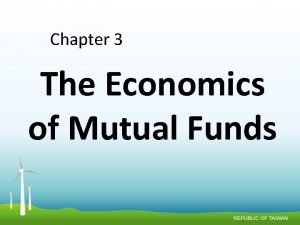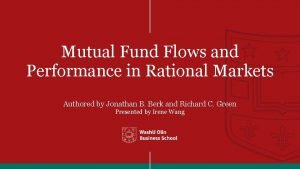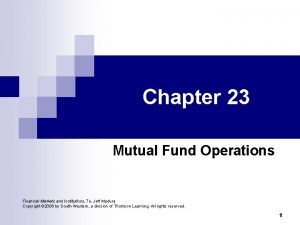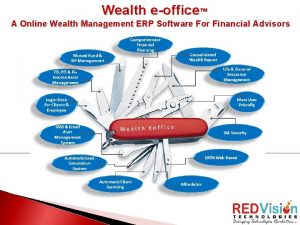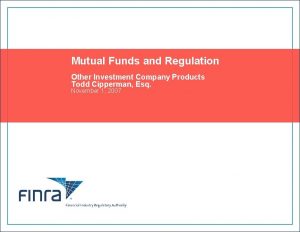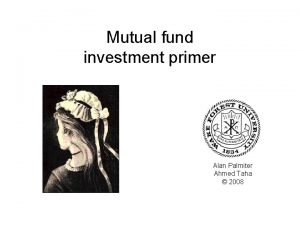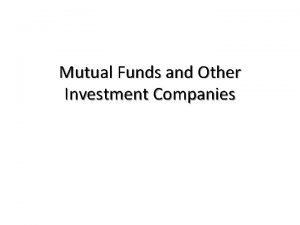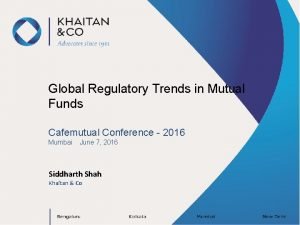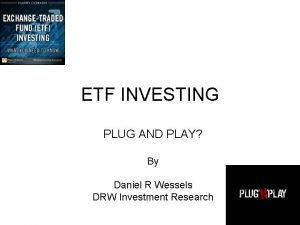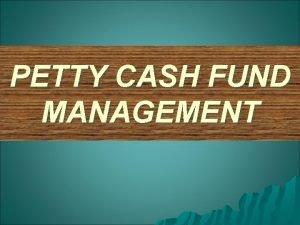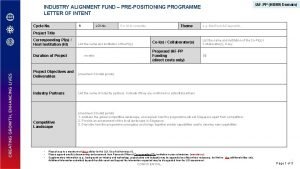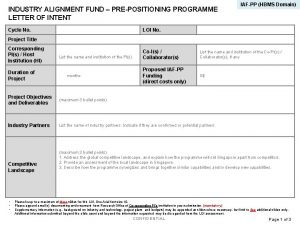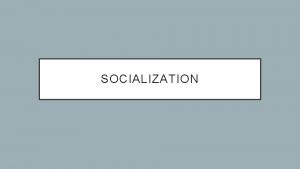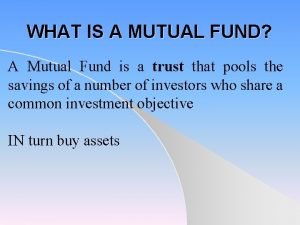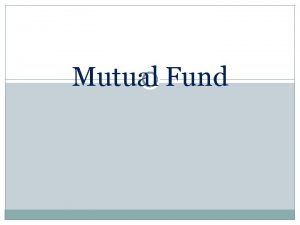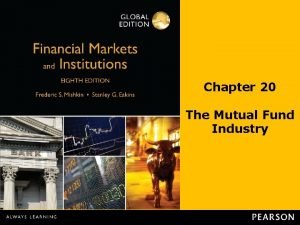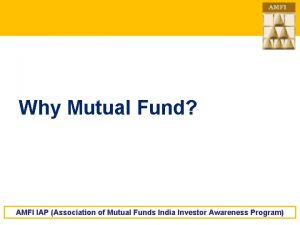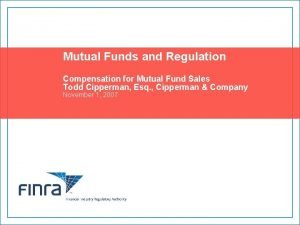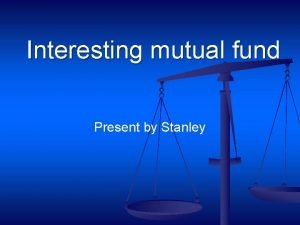Chapter Mutual Fund Industry Who participate in Mutual















- Slides: 15

Chapter Mutual Fund Industry (Who participate in Mutual Fund and how they do so. Also explain different choices available to them.

The Mutual Fund Industry • Mutual funds pool the resources of many small investors • Mutual funds sell shares of the pooled fund and buy securities • The asset are transformed by issuing shares in small denominations and buying large blocks of securities • Mutual funds can take advantage of volume discounts on brokerage commissions and can purchase diversified portfolios of securities • This allows small investors to get benefits of lower transaction costs and take advantage of a reduction in risk by diversifying their portfolios

The First Mutual Funds • Mutual funds originated in mid to late 1800 s in England Scotland • Investment companies pooled the funds of investors with modest resources and used the money to invest in a number of different securities. • Later these companies began investing in the economic growth of the United States, mostly by purchasing American railroad bonds • The first fund in which new shares were issued was introduced in Boston in 1824.

Benefits of Mutual Funds • Liquidity intermediation • Denomination intermediation • Diversification • Cost advantages • Managerial expertise

Liquidity intermediation • Investors can convert their investments into cash quickly and at a low cost • Mutual funds allow investors to buy and redeem at any time and in any amount. • Some funds are designed to meet short-term transaction requirements and have no fees associated with redemption • Others are designed for longer-term investment and may have redemption fees if they are held only a short time

Denomination intermediation • Allows small investors access to securities they would be unable to purchase without the mutual fund. • As most money market securities are only available in large denominations, often in excess of $100, 000. • By pooling money, the mutual fund can purchase these securities on behalf of investors.

Diversification • Risk can be lowered by holding a portfolio of diversified securities rather than a limited number. • Small investors buying stocks individually find it difficult to diversify risk • Mutual funds provide a low-cost way to diversify into foreign stocks. • Significant cost advantages may accrue to mutual fund investors since Institutional investors negotiate much lower transaction fees • Another benefit of mutual fund is access to managerial expertise

Mutual Fund Structure • Complexes are defined as a group of funds under substantially common management, composed of one or more families of funds • Investments can usually be transferred among different funds within a family • In a closed-end fund, a fixed number of nonredeemable shares are sold at an initial offering and are then traded in the over-the-counter market like common stock • once shares have been sold, the fund cannot take in any more investment dollars • The advantage of closed-end funds to managers is that investors cannot make withdrawals

Mutual Fund Structure • The open-end fund continually increases the number of shares outstanding. • The fund also agrees to buy back shares from investors at any time. • Each day the fund’s net asset value is computed based on the number of shares outstanding and the net assets of the fund • As the fund agrees to redeem shares at any time, the investment is very liquid • Also the open-end structure allows mutual funds to grow

Investment Objective Classes • (1) Stock funds (also called equity funds) • (2) Bond funds • (3) Hybrid funds, and • (4) Money market funds

Equity Funds • Equity funds share a common theme in that they all invest in stock • Three classes of Equity Funds are: • Capital appreciation funds • World funds, and • Total return funds

Bond Funds • Strategic income bonds are the most popular and invest in a combination of U. S. corporate bonds to provide a high level of current income • Investors are trading safety for greater returns • Corporate bond funds invest primarily in high-grade corporate bonds • Government bonds are essentially default risk-free, but have relatively low returns • The state and national municipal (muni) bonds are tax-free • Bonds are not as risky as stocks

Hybrid Funds • Hybrid funds combine stocks and bonds into one fund • It diversifies across different types of securities as well as across different issuers of a particular type of security • Despite this apparent convenience, most investors still prefer to choose separate funds

Money Market Funds (MMMFs) • All MMMFs are open-end investment funds that invest only in money market securities • The funds usually have a minimum initial investment of $500 to $2, 000. • The funds’ yields depend entirely on the performance of the securities purchased • MMMFs have check-writing privileges • Thus they are very popular with small investors

Index Funds • Traditional funds employ investment managers who select stocks and bonds for the fund’s portfolio • An index fund contains the stocks in an index. • For example, Vanguard S&P 500 index fund contains the 500 stocks in that index. • The stocks are held in a proportion such that changes to the fund value closely match changes to the index level • Index funds do not require managers to choose securities. As a result, these funds tend to have far lower fees than other actively managed funds
 Us mutual fund industry size
Us mutual fund industry size Mutual fund disclaimer
Mutual fund disclaimer Mutual fund flows and performance in rational markets
Mutual fund flows and performance in rational markets Mutual funds operations
Mutual funds operations My eoffice advisor
My eoffice advisor Uit vs mutual fund vs etf
Uit vs mutual fund vs etf Catholic mutual fund
Catholic mutual fund Old mutual absolute stable growth portfolio
Old mutual absolute stable growth portfolio Mutual fund primer
Mutual fund primer Mutual fund returns may be granted pass-through status if
Mutual fund returns may be granted pass-through status if Cafe mutual fund
Cafe mutual fund Old mutual rafi 40 tracker fund
Old mutual rafi 40 tracker fund Petty cash management
Petty cash management Industry alignment fund
Industry alignment fund Industry alignment fund
Industry alignment fund Def of socialization
Def of socialization
